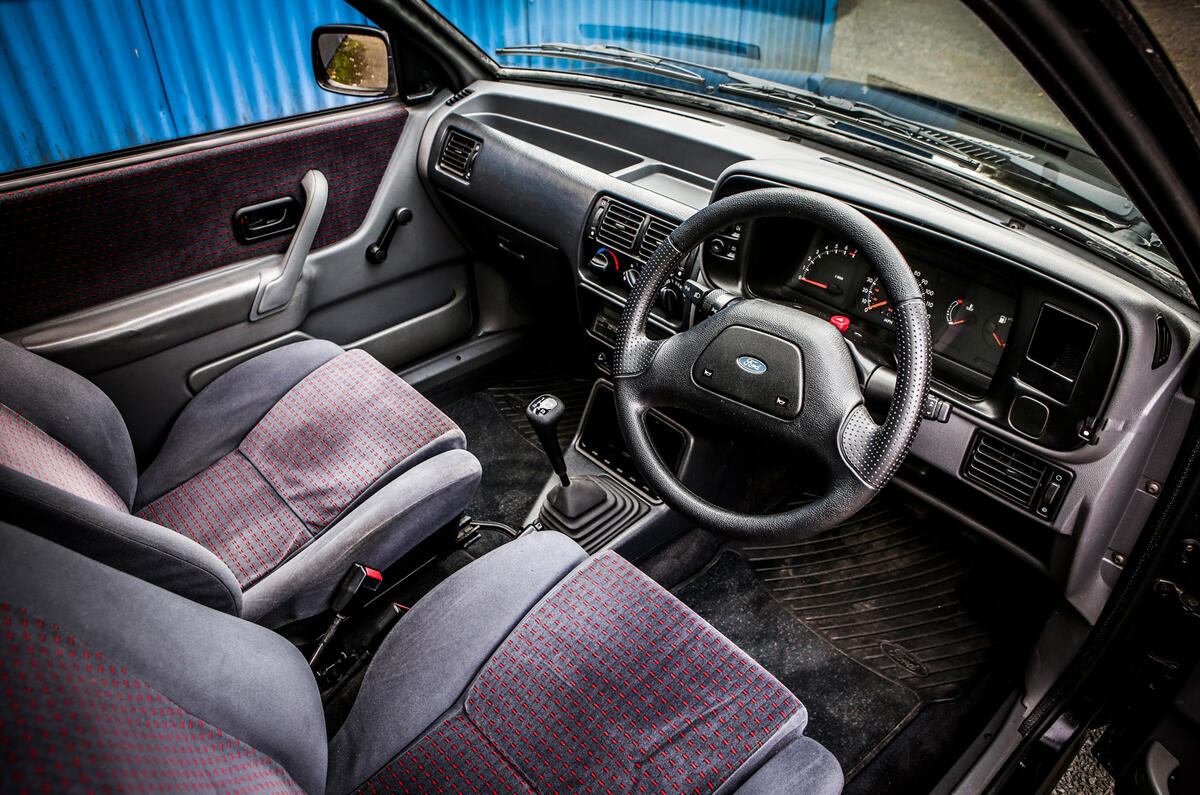The used car scrappage allowance of 2009 has a lot to answer for, not least the absence of XR3is on our roads. Back in 1994, there were around 95,000 of them, but today there are only about 450, with another 1500 off the road being restored or tucked away as investments. And an XR3i is a good investment, in the same league as contemporaries such as the Peugeot 205 GTi and Volkswagen Golf GTI.
That said, how good an investment depends on how much has been spent bringing one up to scratch. We found a 1989-reg concours-winning XR3i with 56,000 miles on the clock advertised for £24,995. The trouble is that £75,000 has been spent getting it to this standard.
Investment potential or not, the XR3i is an appealing car – attractively styled, well equipped for its day and, thanks to a low kerb weight, reasonably responsive. Also, more than its Peugeot and Volkswagen rivals, it has the common touch – a hot hatch for everyman (and woman). Bang in that Dire Straits cassette, spin the fluffy dice and rewind the years.
There were three generations: Mk3 (1982-1986), Mk4 (1986-1990) and Mk5 (1992-1995). Although a good seller at the time, Mk3 XR3is are extremely rare today, having been claimed by rust, accidents and that allowance. Mk5s are rare, too, but rather because they weren’t very popular. Although there was a more powerful 130bhp variant, performance failed to impress against the opposition, which included Ford’s own 150bhp Escort RS2000. We’re interested in the Mk4 here because more of the cars have survived and because they’re well supported by specialists. It was propelled by a 105bhp 1.6-litre CVH engine. The Bosch K-Jetronic fuel injection system was mechanical, but with the arrival of the so-called 90-spec XR3i, Ford replaced it with an electronic system that squeezed power to 108bhp.
![]()





















Join the debate
Add your comment
I had an '87 mark 4 and later a '90 reg version, loved both of them, though I did have problems with poor running with the electronic fuel injection, which never quite went away. I appreciated the subtle differences in styling of the later model but the cross-spoke alloys were a real pain to keep clean compared to the earlier dog-leg ones, which I think are one of the best alloy designs Ford have ever done.